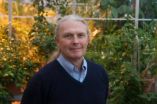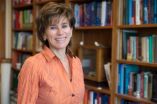(Press-News.org) Fear of visiting the dentist is a frequent problem in paediatric dentistry. A new study confirms the emotional transmission of dentist fear among family members and analyses the different roles that mothers and fathers might play.
A new study conducted by scientists at the Rey Juan Carlos University of Madrid highlights the important role that parents play in the transmission of dentist fear in their family.
Previous studies had already identified the association between the fear levels of parents and their children, but they never explored the different roles that the father and the mother play in this phenomenon.
América Lara Sacido, one of the authors of the study explains that "along with the presence of emotional transmission of dentist fear amongst family members, we have identified the relevant role that fathers play in transmission of this phobia in comparison to the mother."
Published in the "International Journal of Paediatric Dentistry", the study analysed 183 children between 7 and 12 years and their parents in the Autonomous Community of Madrid. The results were in line with previous studies which found that fear levels amongst fathers, mothers and children are interlinked.
A key factor: the father
The authors confirmed that the higher the level of dentist fear or anxiety in one family member, the higher the level in the rest of the family. The study also reveals that fathers play a key role in the transmission of dentist fear from mothers to their children as they act as a mediating variable.
"Although the results should be interpreted with due caution, children seem to mainly pay attention to the emotional reactions of the fathers when deciding if situations at the dentist are potentially stressful," states Lara Sacido.
Consequently, transmission of fear from the mother to the child, whether it be an increase or reduction of anxiety, could be influenced by the reactions that the father displays in the dentist.
Positive emotional contagion
Amongst the possible implications of these results, the authors outline the two most salient: the need to involve mothers and especially fathers in dentist fear prevention campaigns; and to make fathers to attend the dentist and display no signs of fear or anxiety.
"With regard to assistance in the dental clinic, the work with parents is key. They should appear relaxed as a way of directly ensuring that the child is relaxed too," notes the author.
"Through the positive emotional contagion route in the family, the right attitude can be achieved in the child so that attending the dentist is not a problem," she concludes.
###
Reference:
América Lara-Sacido, Antonio Crego & Martín Romero-Maroto. "Emotional contagion of dental fear to children: the fathers' mediating role in parental transfer of fear". International Journal of Paediatric Dentistry 2012; 22:324
Contact:
América Lara Sacido
Universidad Rey Juan Carlos
Tel: 91.488.90.18
Email: america.lara@urjc.es END
Fear of the dentist is passed on to children by their parents
The father acts as an intermediary for dentist fear between both mother and children
2012-11-16
ELSE PRESS RELEASES FROM THIS DATE:
Important progress for spintronics
2012-11-16
A fundamental cornerstone for spintronics that has been missing up until now has been constructed by a team of physicists at Linköping University in Sweden. It's the world's first spin amplifier that can be used at room temperature.
Great hopes have been placed on spintronics as the next big paradigm shift in the field of electronics. Spintronics combines microelectronics, which is built on the charge of electrons, with the magnetism that originates in the electrons' spin. This lays the foundation for entirely new applications that fire the imagination. The word "spin" ...
Melt water on Mars could sustain life
2012-11-16
Near surface water has shaped the landscape of Mars. Areas of the planet's northern and southern hemispheres have alternately thawed and frozen in recent geologic history and comprise striking similarities to the landscape of Svalbard. This suggests that water has played a more extensive role than previously envisioned, and that environments capable of sustaining life could exist, according to new research from the University of Gothenburg, Sweden.
Mars is a changing planet, and in recent geological time repeated freeze and thaw cycles has played a greater role than expected ...
Reconsidering cancer's bad guy
2012-11-16
Researchers at the University of Copenhagen have found that a protein, known for causing cancer cells to spread around the body, is also one of the molecules that trigger repair processes in the brain. These findings are the subject of a paper, published this week in Nature Communications. They point the way to new avenues of research into degenerative brain diseases like Alzheimer's.
How to repair brain injuries is a fundamental question facing brain researchers. Scientists have been familiar with the protein S100A4 for some time as a factor in metastasis, or how cancer ...
Dartmouth research: The clocks are ticking and the climate is changing
2012-11-16
Dartmouth plant biologist C. Robertson (Rob) McClung is not your typical clock-watcher. His clocks are internal, biological, and operate in circadian rhythms—cycles based on a 24-hour period. Living organisms depend upon these clocks to keep pace with the Earth's daily rotation and the recurring changes it imposes on the environment. These clocks allow the plant or animal to anticipate the changes and adapt to them by modifying its biology, behavior, and biochemistry.
"If you know that the sun is going to go down, and if you are a photosynthetic plant, you have to readjust ...
Dartmouth research pursues problematic polymers
2012-11-16
"You look at the material world and see objects and how you can use them. I look at the material world and see a fascinating hidden life which is within our control, if we can only understand how it works," says Jane Lipson, the Albert W. Smith Professor of Chemistry at Dartmouth. Lipson looks at things from the point of view of both a chemist and a physicist. "What I do lies between the two sciences, and there is some engineering thrown in there, too," she says.
Lipson is a polymer chemist who, by definition, deals with long chain molecules composed of repeating structural ...
Are we closer to understanding the cause of deadly sepsis?
2012-11-16
New Rochelle, NY, November 13, 2012—Following an infection, dysregulation of the immune system can result in a systemic inflammatory response and an often fatal condition called severe sepsis or septic shock. Sepsis is not uncommon, yet its cause and underlying immune dysfunction remain poorly understood. Regulatory T cells (Tregs), a component of the immune system, now appear to have an important role in suppressing the immune response in advance of sepsis, and understanding this role may lead to new therapeutic strategies for improving patient outcomes, as described in ...
Gene distinguishes early birds from night owls and helps predict time of death
2012-11-16
BOSTON – Many of the body's processes follow a natural daily rhythm or so-called circadian clock. There are certain times of the day when a person is most alert, when blood pressure is highest, and when the heart is most efficient. Several rare gene mutations have been found that can adjust this clock in humans, responsible for entire families in which people wake up at 3 a.m. or 4 a.m. and cannot stay up much after 8 at night. Now new research has, for the first time, identified a common gene variant that affects virtually the entire population, and which is responsible ...
ORNL recipe for oxide interface perfection opens path to novel materials
2012-11-16
By tweaking the formula for growing oxide thin films, researchers at the Department of Energy's Oak Ridge National Laboratory achieved virtual perfection at the interface of two insulator materials.
This finding, published in the journal Advanced Materials, could have significant ramifications for creation of novel materials with applications in energy and information technologies, leading to more efficient solar cells, batteries, solid oxide fuel cells, faster transistors and more powerful capacitors.
The research team, led by ORNL's Ho Nyung Lee, demonstrated that ...
Teenagers urged to exercise to ward off bone disease
2012-11-16
An international team, including an expert from the University of Exeter, has found evidence that adolescents who spend long periods engaged in certain sedentary activities are more likely to have low bone mineral content in parts of the body where it can be an indicator of the risk of developing osteoporosis.
In the research, published by PubMed on November 15, the team found that studying put girls at particular risk, while for boys leisure internet use posed the greatest threat. Scientists found that participating in at least three hours of certain sports could significantly ...
How does groundwater pumping affect streamflow?
2012-11-16
Groundwater provides drinking water for millions of Americans and is the primary source of water to irrigate cropland in many of the nations most productive agricultural settings. Although the benefits of groundwater development are many, groundwater pumping can reduce the flow of water in connected streams and rivers—a process called streamflow depletion by wells. The USGS has released a new report that summarizes the body of knowledge on streamflow depletion, highlights common misconceptions, and presents new concepts to help water managers and others understand the effects ...
LAST 30 PRESS RELEASES:
New technique lights up where drugs go in the body, cell by cell
New study finds movement of fishing fleets can reveal shifts in marine ecosystems
Embargoed: New evidence points to potential treatment for vascular dementia
Study uncovers disrupted brain balance in alcohol dependence
Working in groups can help Republicans and Democrats agree on controversial content moderation online
Structural findings reveal how distinct GPCR ligands create different levels of activation
Anything-goes “anyons” may be at the root of surprising quantum experiments
UC review: Maximizing workplace opportunity for veterans
From generation to complex control: Metasurfaces make perfect vortex beams "within reach"
Thin-film lithium niobate-based detector: recent advances and perspectives
Exploring why some people may tend to persistently make bad choices
How cells balance their protein levels
Nirsevimab vs RSVpreF vaccine for RSV–related hospitalization in newborns
Effectiveness and impact of maternal RSV immunization and nirsevimab on medically attended RSV in US children
AI gives scientists a boost, but at the cost of too many mediocre papers
Next-generation vision model maps tree growth at sub-meter precision
Genes aren’t destiny for inherited blindness, study shows
MIT study: High-fat diets make liver cells more likely to become cancerous
Exposure to multiple fine particulate matter components and incident depression in the US Medicare population
Risk of burdensome health care spending over time in the US
Nirsevimab against hospitalizations and emergency department visits for lower respiratory tract infection in infants
New microfluidics technology enables highly uniform DNA condensate formation
A new strategy for immune tolerance
Super Mario Bros. help fight burnout: New study links classic games to boosted happiness
Deepest gas hydrate cold seep ever discovered in the arctic: International research team unveils Freya Hydrate Mounds at 3,640 m depth.
Integrating light and structure: Smarter mapping for fragile wetland ecosystems
ACA-SIM: A robust way to decode satellite signals over complex waters
Probiotics can restore gut microbiome in breastfed infants
AI could help predict nutrition risks in ICU patients, study finds
Federal EITC has unexpected result, researchers say – it decreases domestic violence
[Press-News.org] Fear of the dentist is passed on to children by their parentsThe father acts as an intermediary for dentist fear between both mother and children



